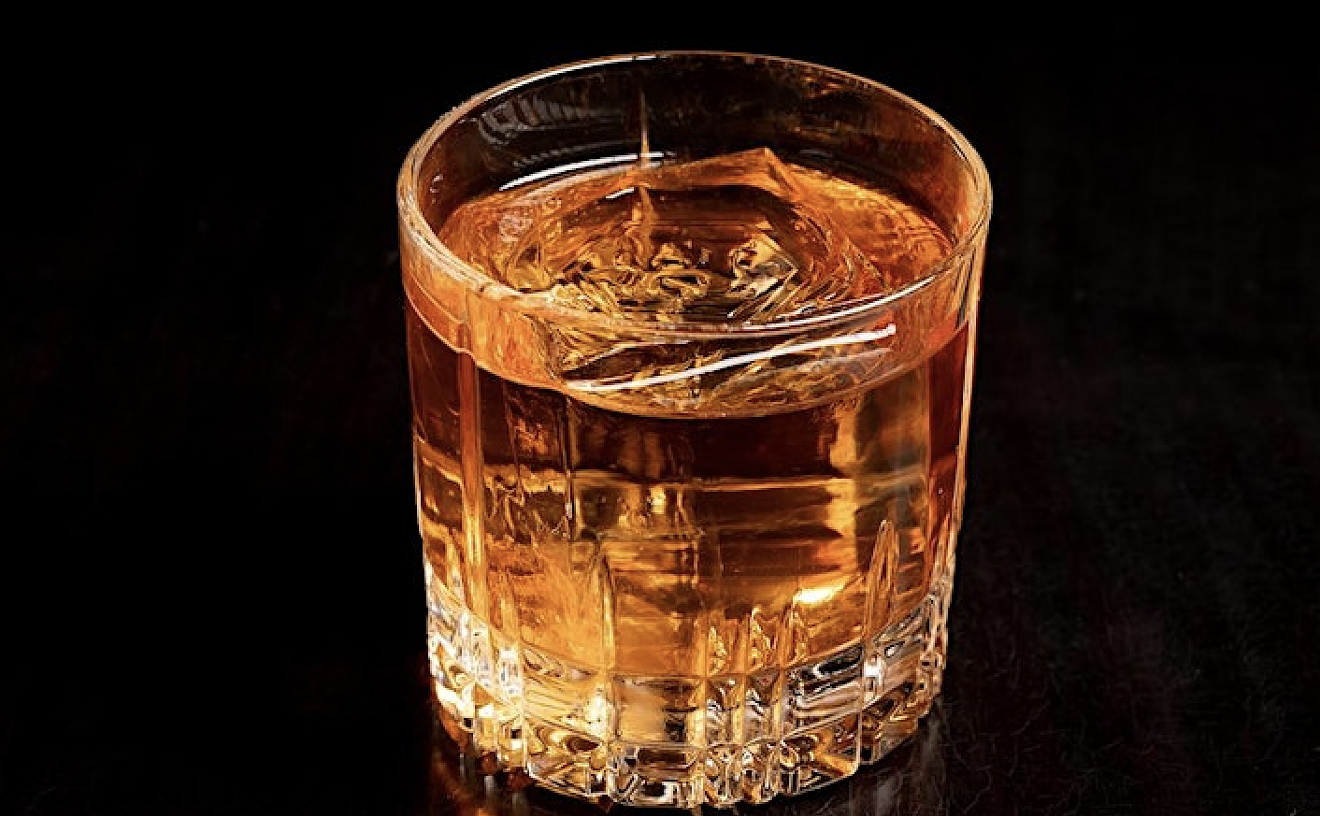Have you always wanted to learn to make sushi? Have you bought all the ingredients necessary, only to make a mess halfway through and end up eating the crab by itself? Yeah, we've been there.
Things are looking up thanks to Sushi & Sake 101 at Sushi Samba Coral Gables. S&S 101 is exactly what it sounds like -- a completely interactive lesson on making (and eating) sushi. You'll also have the chance to learn everything you ever wanted to know about sake -- while drinking it. The two-hour, two-part lesson will take place Tuesday, April 29, from 7 p.m. to 9 p.m.
We had a chance to talk to executive sushi chef Eric Ou and sake sommelier Craig Tabendera about the what to expect to walk away with from the class, the infamous rice roll, and its fermented rice beverage companion.
See also: Huahua's Todd Erickson Teaches Us How to Make Hot Sauce
During the first hour, students will be guided by Sushi Samba's sake sommelier through an educational history of the Japanese alcoholic beverage made from fermented rice. The history lesson is paired with five flights of sake, as well as common myths, pairing tips, and recipes. You'll go far beyond what you think you know about sake -- hot and cold -- and explore aged, sparkling, sweet, and spicy, and even rich and round with a sweet caramel finish. Yes, we're still talking about sake.
In order to keep your alcohol tolerance satiated, Sushi Samba will provide signature dishes, tempura, sashimi, and a variety of sushi rolls throughout the class.
Part two of the class features sushi making. Executive chef Eric Ou will walk you through the history and traditions, followed by a demonstration on the selection and preparation of the fish. You'll then be guided by Eric as you create your own choice of sushi rolls. Our advice it to pick your favorite item from the menu and learn to recreate it. Once finished, you get to enjoy your masterpiece and walk away from the class with a full belly and a take-away booklet that will help you apply your sushi making knowledge at home.
New Times: How did the idea of sushi and sake develop?
Eric Ou: The idea for sushi & sake classes developed in 2006, it became the most popular class in the Sushi Samba history, and one that we now introduced at every single Sushi Samba location.
What are some misconceptions people have about sushi making that you hope to clarify?
There are a lot of misconceptions about sushi, especially surrounding the preparation of sushi rice and fish. Most people think that sushi rice and warm steamed rice are one in the same, however, the culinary approach could not be more different -- in Japan, sushi chefs spend years learning how to perfect sushi rice. Regarding the fish in sushi rolls, most people think we're just using raw pieces. In reality, only a small selection of the fish will actually be served raw. Most fish has been prepared in some fashion, whether pickling, blanching or soaking in sake prior to making it to your plate.
What's the most important thing when it comes to sushi? Any special tricks you'll be sharing?
The most important thing to know when you are eating sushi is the market. Whatever is in season is whatever tastes best: Tuna (winter), yellowtail (summer & winter), snapper (winter, spring and summer), fluke (winter), fresh eel (summer).
Why is the history of the rice roll dish worth sharing?
With over a thousand years of history and tradition, sushi has quite possibly become the most prominent example of Japanese cuisine. Sushi was not always as popular as it is now. In the past, it was thought more of a 'snack' than something considered for lunch or dinner. Sushi is undeniably a unique style of cooking and is sometimes mistaken as 'easy to make,' however a great deal of time, effort and delicate handling is involved in creating exquisite sushi. One must have knowledge of the quality, specific characteristics, seasonal freshness and proper cooking methods of all the different types of fish. It's an art that takes skills and patience and it's something that's very unique and we see great interest in from our guests.
New Times:Lots of people drink sake but don't really know what they're drinking. Do you see this a lot and what's the best way to educate people on the beverage?
Craig Tabendera: Yes, we have quite a lot of guests drinking sake with no prior knowledge except, perhaps, that they like the taste of the one they ordered. A big part of sake's mystique is that for decades following its arrival to America, it was served out of nameless carafes and poured by the staff into Ochoko (traditional ceramic cups) or glasses with no mention of what they were pouring. Because most commercially sold sake was only Junmai (basic level of refinement) in Japan until about 1981, even most Japanese have very limited knowledge of the 2 more refined classes of Ginjyo and Daiginjyo. In this way, it was difficult for the staff to share knowledge they didn't have. The best way to educate is at an event such as Sushi Samba's Sushi & Sake 101, where sake is paired with food in a casual, fun and interactive environment in which guests get to have their questions answered as they taste and pair. This helps imbed the knowledge into their minds for remembrance later.
What misconceptions do people have about sake and why?
First, that it is rice wine. It is not. It is rice alcohol brewed like beer using only 4 ingredients: rice, water, yeast & koji-kin. Through multiple parallel fermentation, which is a process ONLY used for sake, it achieves a higher alcohol content than beer. Due to the fact that most sake retails between 14% and 17% alcohol content, this was much too close to wine. As a result, when it came to America it was branded as a wine category beverage due to the similar alcohol content. This leads to the second misconception: that sake is a strong alcoholic beverage. This idea is most likely because of over consumption without drinking water at the same time. Because the primary acidity of sake is amino acids, one of our bodies natural building blocks, it drinks easier and is more friendly for the body to process.
We know myths are part of the class, but what are some of the most common myths about sake?
That all hot sake is bad sake, which is simply untrue. Certainly, the lower refinement grade of Junmai stands up much better than the delicate Daiginjyos to the heating process and can exhibit some wonderful "unseen" characteristics, which are hidden in its chilled version. What is true is that premium sake should only be heated to a temperature of about 105 degrees Fahrenheit. Most Americans are used to about 125 degrees, but at this temperature, no nuances show through since the sake is outside of the finite reaches of our taste-buds. Myth #2: It is bad luck to pour your own sake. This is a falsity. It is certainly extremely bad manners to allow your guests to pour their own sake, for which they respond by filling your glass as a further courtesy. Unless, of course, you're entertaining a potential client or have asked your boss to dinner to request a raise. Under these circumstances, not pouring their sake could create bad luck for the outcome of the endeavor.
What do you hope people walk away with from Sushi & Sake 101?
Sushi & Sake 101 provides a broad education for guests with information that will benefit both 'Sake Initiates' and 'Sake Aficionados' attending the class. Everyone has different objectives for signing up... if a guest's goal is to leave with enough knowledge to go out and confidently order sake, and they've achieved this by the end of Sushi & Sake 101, then we have done our job as the 'experts.' Even remembering something as simple as the class of sake they most enjoyed (Junmai, Ginjyo, Daiginjyo) will help guide them in their future experiences with sake.
Sushi & Sake 101's spring series next installment takes place Tuesday, April 29th and costs $85 per person. Seats are limited to 25 per person. Classes will run through June and take place the last Tuesday of every month from 7 to 9 p.m.
Follow Carla on Twitter @ohcarlucha
Follow Short Order on Facebook, on Twitter @Short_Order, and Instagram @ShortOrder.










